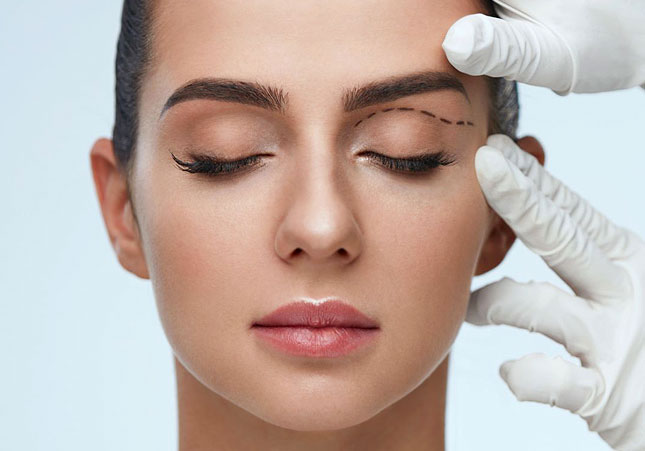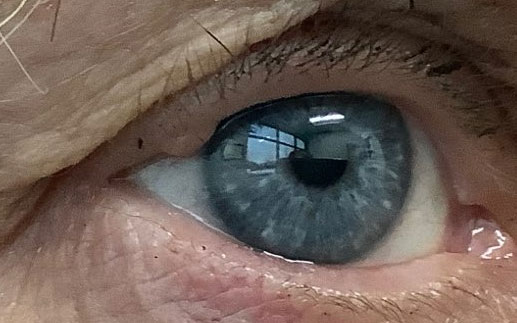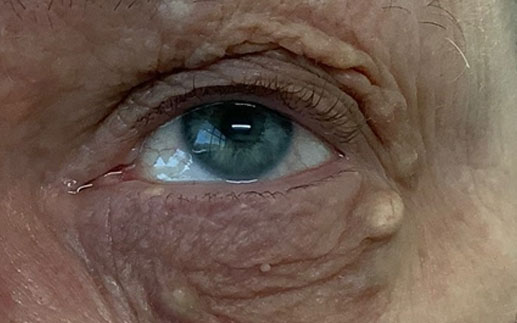Eyelid Lumps and Bumps
Eyelid Lumps and Bumps

What are the common types of lumps and bumps that occur in the eyelid?
There are many types of growths that we see here that arise from different causes. Among the most common bumps we see in the lid is a stye, also called a chalazion. This is a bump caused by an oil gland that becomes plugged. We all have lots of oil glands in the eyelids and normally they help produce oil that becomes part of our natural tears, which help lubricate the eyes. If these glands become plugged, the oil cannot escape from the gland, causing the gland to swell. In some cases, styes may also become infected, resulting in even more swelling and pain.
Other types of common growths of the eyelid include cysts. Cysts are essentially small “balloons” of tissue underneath the skin surface. These growths hold onto a variety of different materials. Common cysts that have skin cells within them may look yellow or whitish. Clear cysts typically contain sweat. Dark or purple cysts often have blood within them. In almost all cases, cysts must be removed and not simply drained in order to treat them. If they are drained, they typically fill back up over time.
There are lots of other types of growths we see in the eyelid, so a thorough evaluation of your growth is necessary to determine what it is, and how best to treat it.
How are these lumps and bumps treated?
Depending upon the type of growth, the bump may be completely removed, or simply drained. As mentioned above, care must be taken to avoid doing damage to the important and unique features of the eyelid. Frequently, these growths occur at the margin of the eyelid where our eyelashes arise. Dr. Dewan approaches this area with care, emphasizing doing as little harm to the eyelashes as possible. Depending upon the size and specific location of your growth, a few lash follicles may be involved. In most cases, these grow back without much difficulty.
For styes or chalazion, Dr. Dewan may recommend a stepwise approach. In many cases, he may treat this medically and instruct a specific care regimen to help the stye go away. If that treatment does not fully remove the stye, a drainage procedure may be necessary.
How is a growth removed from the eyelid?
How is a stye drained?
What is the recovery like from a growth removal?
Recovery from having a growth removed or a stye drained is usually easy. There is typically only minimal discomfort and most patients treat this with Tylenol or ibuprofen. Patients sometimes have swelling and occasional bruising. You may choose to use ice packs if bruising is present. Rarely, patients may require stitches. Dr. Dewan also prescribes an antibiotic ointment for you to use on any spot where the procedure was done. This will help the area heal well.
For patients having a stye drainage, Dr. Dewan typically places a patch over the eye that you may remove after 3-4 hours. It is very important to use warm compresses following a stye drainage to encourage the stye to finish draining.
Examples of growths


Does insurance cover revisional growth removals?
Benign growth removal is typically not covered by insurance companies unless it is causing a medical problem. In rare cases where a growth is so large that it is obstructing vision or pulling an eyelid down, insurance will cover the removal. For patients with a history of skin cancer, insurance may cover a removal of the growth as well, which allows us to biopsy the growth and determine if there is any skin cancer present.
Stye drainage is usually covered by insurance. Our office will confirm coverage details with your insurance plan prior to your procedure.
the best results.
